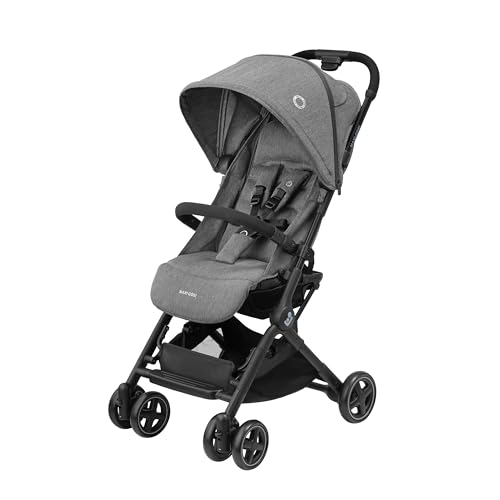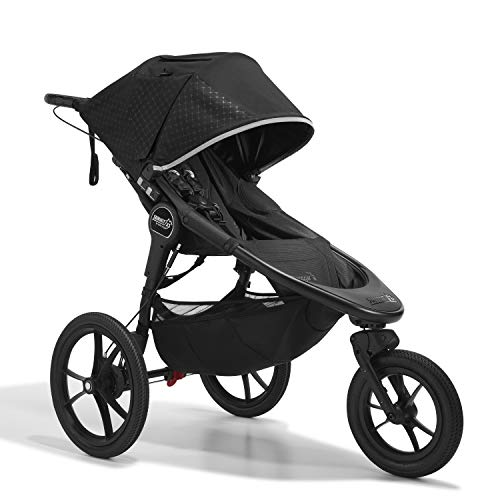10 Parent Facing Pram-Friendly Habits To Be Healthy
페이지 정보

본문
 Monitor Your Little One's Wellbeing With a Parent Facing Pram
Monitor Your Little One's Wellbeing With a Parent Facing PramWhen your baby is cuddled in a parent-facing pram, you can monitor their wellbeing and comfort easily. This is especially useful during busy times.
A study conducted by the University of Dundee found babies in buggies with faces had twice as many conversations, had more fun and lower heart rates - all signs that they were less stressed.
Peace of Mind
A parent-facing pram is a great way to ensure your baby's safety. The seat will be secured with a five-point harness, which will keep your baby safe from any injuries.
A quality pram comes with a large basket that can be able to hold all the baby's necessities and you won't have to think about where all the other items will go. Having the right accessories is crucial to help your child feel comfortable during their travels including a footmuff (check that they're compatible with a 5-point harness) and a liner for the pram to guard against sun or rain.
When selecting a pushchair to your child's new arrival it is essential to test drive it and find the right model for your child and you. Models that have swivel wheels for easy maneuverability, and adjustable handlebars will make it simpler for the entire family to operate.
If you're worried about your child falling out of their buggy or tumbling out of their seat, an safety harness is a must for every parent. It will prevent your child from leaving the seat and is a great way to keep them close in the event in the event of an emergency.
It's important to note that some experts for babies suggest that babies are around six months old before they can use a front-facing pram but this is due to individual development milestones. Some babies are ready for the world more quickly and this is especially true when their curiosity and desire to discover the world is strong.
Parents might be worried that their newborn will develop a flat spot in the back of their head while being in a pram with a parent facing position however, this isn't something to be concerned about. Auckland osteopath Julia Griffiths suggests that babies must spend a significant amount of time lying down to strengthen their skull muscles. this can often be done by using a carrier in a parent facing position and being supervised during tummy time.
Enhanced Bonding
Whether you have chosen a pram with a carrycot or using a pushchair, the direction that your baby faces while out and about is something to be aware of. It may seem like a minor detail but it can have a huge impact on your child's development and interaction with you while out and about.
A new study has found that babies in away-facing buggies are less likely to engage in conversation or interact with their parents as compared to those who have a Parent Facing Pushchair (Https://Www.Chatteriedeletoilebleue.Be). The study involved 2,722 children with their mothers in 60 cities as well as another study that focused on 20 mothers and their children. The study showed that babies who were in a pram with their parents were twice as likely to smile than those who were seated in a buggy with their backs to the wall. This is because if your baby can be able to interact with you and see your face and you, they are more involved.
Babies are able to learn about the world around them, and facing each other in the process can help them develop and build bonds. You can also point out items to them, such as flowers playgrounds, buses, and other things they might not otherwise notice.
It is important to remember that your baby should be able sit up on their own before you convert it into a pushchair with the face toward the front. Children younger than this age may be unable to adjust to the new position, and may be more stressed when they have to change from a seated to a standing position.
The best way to make sure your baby is ready for the change is to test them by a health professional. They will determine whether your child's bones and muscles are strong enough to withstand the change, and whether they've developed any hypersensitive spots. This test is particularly crucial if you've used your pushchair since the time of your baby's birth or if you have previously used an incline-facing pram. A health professional will be able to advise you on when it is safe for your child to move to a forward-facing pushchair.
Better Eye Contact
The ability to communicate with your child is among the most appealing features of a pram that faces you. This is particularly important for infants and newborns who are still learning to interact with the world. It's also an opportunity to talk to them and play with them, which helps them to learn the names of the things they see and improves their development in language.
According to research, children who look at their parents are more likely to smile and converse with them than those who look away. This is because babies absorb sounds and images from their environment. They can better understand what's happening around them. In addition, eye contact allows parents to communicate with their children, which helps ease their pain and allows them to relax.
Bring a travel toy along with your child to play with when they are in the pushchair. These toys are excellent for stimulating the brain and making children smile. These toys can help your child to recognize your voice, which is essential for the development of their brain.
Babies love looking at the world around them and exploring the world around them. As they grow older and become more active, they might be able to sit in their running pushchair. If this is true it's worth considering a front-facing stroller or double pram from our selection.
It is recommended to purchase a footmuff a few months after converting to a pushchair with a forward-facing. This will keep your child warm. Find a model that can be attached and removed as required and is compatible with your baby's car seat or cot. You can also buy a unique travel item to help your baby identify their pram when they are out and out and about.
A great way to ensure that your child's posture is correct and that they're comfortable is to be sure to check their head and neck alignment frequently. If the front of their pushchair is tilted forward, their head and neck will be pushed against it, which isn't a good idea.
Easier Monitoring
You can monitor your baby's progress better with the reassuring view of their face when they are in the pram in front of you. You can determine whether your baby is sleeping, upset, or cold. You can also see whether their hat or socks are missing. You can also communicate with a baby more comfortably when they are right standing in your presence. They can see you and hear your voice.
This is essential for babies with speech and language problems because it helps them to be more active. It's also a great way to teach your child about the world, like when you point out flowers or buses. You can also sing to them, particularly when you know they love singing!
In fact, many children love to talk to their parents when they are parent facing and there are plenty of studies that prove this. For instance the study conducted by Dundee University found that babies were twice as active in a forward-facing pushchair as in a rear-facing model. The same study revealed that babies who's faces were not visible by their parents showed more swings in heart rate, indicating that they felt anxious and stressed. Babies whose faces were visible to their parents however were able to have heart rates that were more steady and peaceful.
This does not mean that every child has to be changed to a forward-facing stroller immediately. It is better to wait until the child is six months old. This is at which their bones and muscles are fully developed enough to make the transition safe for them.
 This is why many parents choose to keep their children in a babiie stroller that is geared towards parents until then. There are great pushchairs and strollers out available that allow you to change between two directions so you can keep your toddler or baby parent-facing for as long as you want. Verify the compatibility between your buggy or pram as well as the car seat you are planning to use. This can vary from model to model.
This is why many parents choose to keep their children in a babiie stroller that is geared towards parents until then. There are great pushchairs and strollers out available that allow you to change between two directions so you can keep your toddler or baby parent-facing for as long as you want. Verify the compatibility between your buggy or pram as well as the car seat you are planning to use. This can vary from model to model.- 이전글The 10 Most Scariest Things About Stroller Newborn 24.11.02
- 다음글Some Facts About Anya Fernald That can Make You are feeling Higher 24.11.02
댓글목록
등록된 댓글이 없습니다.

